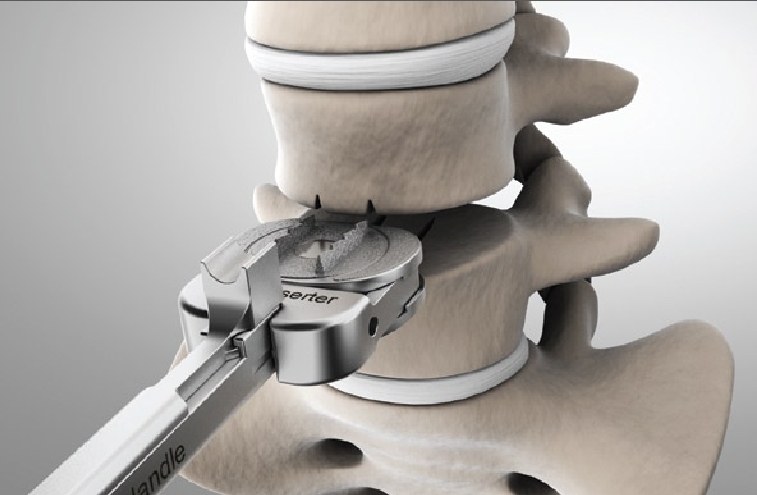Case Reports
. 2021 Feb 9;13(2):e13238.
doi: 10.7759/cureus.13238.
Affiliations
Affiliations
- 1 Orthopedics, General Hospital of Patras, Patras, GRC.
- 2 Orthopedics, Karamdaneion Hospital, Patras, GRC.
- 3 Otolaryngology – Head and Neck Surgery, General Hospital of Patras, Patras, GRC.
Item in Clipboard
Case Reports
Ioannis Papaioannou et al.
Cureus.
.
Display options
Format
. 2021 Feb 9;13(2):e13238.
doi: 10.7759/cureus.13238.
Affiliations
- 1 Orthopedics, General Hospital of Patras, Patras, GRC.
- 2 Orthopedics, Karamdaneion Hospital, Patras, GRC.
- 3 Otolaryngology – Head and Neck Surgery, General Hospital of Patras, Patras, GRC.
Item in Clipboard
Display options
Format
Abstract
Acute traumatic spondylolisthesis in the lumbosacral spine is an uncommon injury. Traumatic dislocation of the fourth lumbar vertebra over the fifth lumbar vertebra (L4/L5) is extremely rare since few studies have been reported in the current literature. We report on a 53-year-old man, who had a motor vehicle accident and sustained an injury of the lumbar spine without neurological impairment. The radiographic evaluation disclosed an L4/L5 traumatic spondylolisthesis, classified as Meyerding grade III without any fracture of the posterior vertebral elements. To the best of our knowledge, this is the sixth case of L4 traumatic spondylolisthesis without concomitant fracture of the posterior vertebral elements and the third case without any neurological deficit among them. The patient underwent open reduction and posterior instrumentation. Intraoperatively, the posterior ligamentous complex, the capsules of the facet joints and also the disc were found torn, although facets, neural arch, and pedicles were intact. Following decompression and reduction of the spondylolisthesis without any neurologic complications, we performed pedicle screws and rods fixation from the third to the fifth lumbar vertebra (L3-L5). The patient had an uneventful recovery and returned to his previous activity three months after surgery. The four-year follow-up evaluation showed normal spinal alignment, successful pain-free fusion without neurologic complications. Flexion/distraction injury without simultaneous rotation at the L4/L5 segment during traffic accidents or the fall of a heavy object on the bent back accompanied with posterior ligament weakness is thought to be the probable mechanism for this type of injury. Concomitant neurologic impairment is associated with the majority of L4/L5 spondylolisthesis cases. Posterior decompression, reduction, and posterior instrumentation enhances bony fusion, improves the patient’s neurologic status and restores the sagittal alignment.
Keywords:
flexion/distraction injury; ligamentous rupture; pedicle screw fixation; traumatic lumbar spondylolisthesis.
Copyright © 2021, Papaioannou et al.
Conflict of interest statement
The authors have declared that no competing interests exist.
Figures

Figure 1. Preoperative supine lateral roentgenogram on…
Figure 1. Preoperative supine lateral roentgenogram on admission of the lumbar spine showing Meyerding III…
Figure 1. Preoperative supine lateral roentgenogram on admission of the lumbar spine showing Meyerding III anterolisthesis of L4. The black arrow shows the avulsion fracture of the anterior–superior vertebral corner.

Figure 2. Preoperative anteroposterior roentgenogram of the…
Figure 2. Preoperative anteroposterior roentgenogram of the lumbar spine showing narrowing of the intervertebral space…
Figure 2. Preoperative anteroposterior roentgenogram of the lumbar spine showing narrowing of the intervertebral space (black arrows).

Figure 3. Preoperative lateral supine CT scan…
Figure 3. Preoperative lateral supine CT scan with sagittal reconstruction showing the anterolisthesis of L4…
Figure 3. Preoperative lateral supine CT scan with sagittal reconstruction showing the anterolisthesis of L4 and the avulsion L5 fracture (black arrow).

Figure 4. Preoperative axial CT scan at…
Figure 4. Preoperative axial CT scan at the segment L4-L5 showing double contour (white arrow),…
Figure 4. Preoperative axial CT scan at the segment L4-L5 showing double contour (white arrow), indication of olisthesis.

Figure 5. Postoperative (three months follow-up) standing…
Figure 5. Postoperative (three months follow-up) standing roentgenogram of the lumbar spine showing excellent sagittal…
Figure 5. Postoperative (three months follow-up) standing roentgenogram of the lumbar spine showing excellent sagittal balance and pedicle screw-rod fixation in situ.

Figure 6. Postoperative (three months follow up)…
Figure 6. Postoperative (three months follow up) standing anteroposterior roentgenogram of the lumbar spine. The…
Figure 6. Postoperative (three months follow up) standing anteroposterior roentgenogram of the lumbar spine. The black arrows show the level of the interbody fusion.

Figure 7. Postoperative lateral standing roentgenogram of…
Figure 7. Postoperative lateral standing roentgenogram of the lumbar spine four years postoperatively. Note the…
Figure 7. Postoperative lateral standing roentgenogram of the lumbar spine four years postoperatively. Note the completed fusion (white arrow) and excellent sagittal balance.

Figure 8. Postoperative anteroposterior standing lateral roentgenogram…
Figure 8. Postoperative anteroposterior standing lateral roentgenogram of the lumbar spine in the last evaluation,…
Figure 8. Postoperative anteroposterior standing lateral roentgenogram of the lumbar spine in the last evaluation, four years postoperatively.
References
-
-
Traumatic lumbosacral dislocation: report of two cases. Tsirikos AI, Saifuddin AS, Noordeen MH, Tucker SK. Spine. 2004;29:164–168.
–
PubMed
-
-
-
Traumatic spondyloptosis of L4. Zhou TH, Tang XU, Xu YQ, Zhu YL. Spine. 2010;35:855–859.
–
PubMed
-
-
-
Traumatic bilateral locked facet at L4- 5: report of a case associated with incorrect use of a three-point seatbelt. Mori KA, Hukuda SI, Katsuura AK, Saruhashi Y, Asajima S. Eur Spine J. 2002;11:602–605.
–
PubMed
-
Cite

